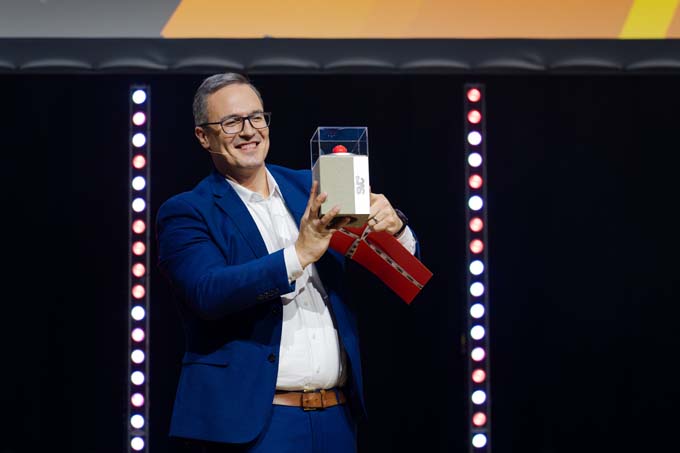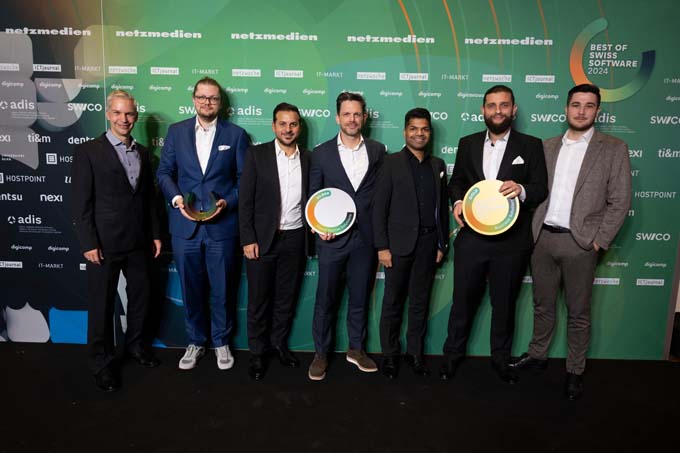One Workspace: Current challenges in the implementation of 4.0 workplaces
The topic of "One Workspace" is highly topical. Oliver Bendig, CEO at Matrix42, summarizes in the following article what is important when implementing One Workspace concepts.

It will be some time before "Homo Deus," as described by Israeli historian Yuval Noah Harari in his much-discussed new book of the same name, becomes active in our working world. Perhaps this vision of a human-machine hybrid will never become reality. Nevertheless, the first steps in this direction have long since been taken: artificial intelligence is making its way into the workplace, as are virtual and augmented reality; even data chips worn subcutaneously are already being tested. All these aspects may be utopia or dystopia. But the One Workspace concept is highly topical because it enables a better working life and is therefore being implemented by an increasing number of companies. In doing so, a number of challenges have to be mastered: processes have to be rethought, employees have to be equipped with the right competencies, and the management culture has to be subjected to new approaches. Often forgotten or mistakenly ignored, but just as important, is the topic of legal compliance of IT and the special topic of data center compliance. This is where operational and financial risks are hidden that can be avoided. On the contrary, active management enables cost optimization and legal certainty for companies and employees.
Why One Workspace?
Modern knowledge workers use different devices (PC, laptop, smartphone, tablets, etc.) and different types of applications for their work, such as mobile, virtual or physical apps and SaaS apps. They use different data containers, e.g. Google Drive, Dropbox, Sharepoint, and very many digital identities, such as the Active Directory account in the company, Google ID, Apple ID, etc. Devices and applications are also often privately funded and organized, but used for work. Private and business data sit side by side on the devices and data containers. The employees' demand is to be able to work at any time, at any place and with any device, i.e. to have unrestricted access to applications and data and to act in a way that is both data and legally secure. The variety of mobile devices and the operating system versions running on them alone pose major challenges for IT. Combined with the variety of applications and the demands that modern license management places on the enterprise, context-based provisioning and management of the modern workplace becomes an extremely complex task. Just one example: How does IT manage to know which employee needs which Office 365 subscription and which components of the license they are using at all, or whether the license spend may be unnecessary in light of non-use? Nevertheless, every company wants to support and improve the productivity of its increasingly mobile employees and efficiently exploit the possibilities of the devices and applications. People and technology should work together optimally for business success. With the time-honored methods of workplace management, this cannot be achieved in an increasingly cloud- and mobile-savvy world. That's why the One Workspace concept has begun its triumphant march through companies. With One Workspace, employees have all their devices, applications, data, identities and services available to them through a personal cloud. Organized, managed, serviced, and IT and legally secured, this cloud workspace is delivered to any device at any time at the right service price.
The devil is in the details
Companies want to actively control their process costs, for example in the service desk, and have sovereignty over their data, including their commercial data. In other words, they also want to actively control their licenses. However, application licensing is highly complex. In practice, most applications on mobile devices come from public apps stores, where employees obtain them themselves. What most employees don't consider: Some apps are free for personal use, but not for professional use. And even if they are paid apps, the license is often only valid for private use. In addition, manufacturers often offer volume purchase programs for paid apps, which are interesting for companies in order to reduce costs. Individual purchases by employees therefore make little commercial sense in most cases. Indirect licensing is no less relevant when software is used that may require access licenses for databases or application servers (CAL Client Access License) in the server environment. In this area, active control by the company is of even greater relevance. This may involve considerable cost risks. Manufacturers have significantly more opportunities here to set prices, differentiate and modularize. And they use this to the best of their ability. The example of Oracle alone shows that even small things can have a major financial impact. What may be a "piece of cake" for the database administrator may make the person responsible for licensing turn pale.
Transparency about processes and costs
One Workspace solutions provide a remedy. They provide transparency about the licenses used in the company on PCs, mobile devices, cloud-based workstations through to the data center and the associated costs, thus enabling active control. By enabling usage measurements, they give IT an overview of which applications are installed on which device and how frequently they are used. If private devices are in use in the company, corporate policies should be introduced to regulate access to this partially private information before usage measurements are carried out. In principle, there are clear legal requirements for the introduction and use of technical equipment that is suitable for monitoring the behavior or performance of employees - regardless of whether the devices are private or company-owned. In many companies, employee representatives also play a major role in safeguarding such interests. IT, however, needs control over the applications if it is to actively manage both security and cost aspects. Depending on the results of the survey, IT has various options: With a One Workspace tool, for example, unused licenses can be uninstalled on the devices or the application portfolio can be reduced right away. Maintenance contracts can also be optimized, the purchase of unnecessary updates can be limited and framework agreements can be renegotiated.
Covering the entire digital lifecycle
However, One Workspace solutions not only bring benefits in license management. They cover the entire lifecycle of a workspace. From the individual configuration of the workspace and its integration into the company's IT landscape to the services desk and license management, all aspects are covered and can be controlled centrally by the company. The One Workspace concept also provides everything for today's and tomorrow's knowledge workers, keyword Generation Z, to be able to work unhindered and productively in the age of digitalization. Because with a One Workspace solution, the foundation is laid to be able to cover future scenarios as well. Whatever devices and functionalities the Internet of Things and wearables and virtual reality development will provide for tomorrow's work. All these devices and functionalities need to be managed - One Workspace solutions specialize in just that. Investments in One Workspace systems are therefore also investments in the future of the workplace.
One Workspace at Swiss Companies
The topic of One Workspace has already arrived in Switzerland as well. Swiss companies have recognized the challenges posed by the rapid changes in the way work is done today and in the near future. However, many people in charge are not yet giving the topic the right weighting. At the same time, it is strategically important to provide future generations with customized workplaces in good time and to operate them optimally in terms of costs as well as IT and data law. After all, in the global knowledge economy, corporate success depends to a very large extent on the productivity and satisfaction of employees. The sooner companies act, the more likely they are to have a lasting impact on their success in the market and on the labor market.
Oliver Bendig is CEO of Matrix42.









